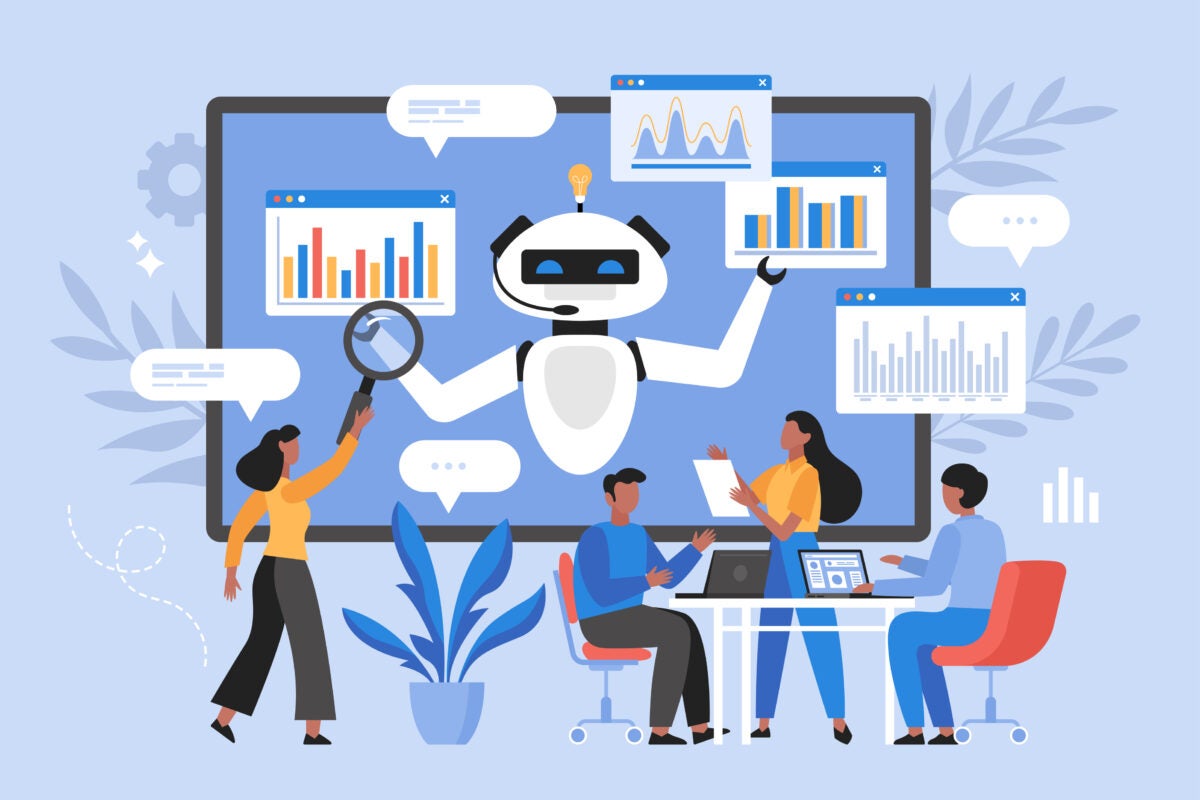The Truth About Gen AI in Sales
5 common misconceptions about Artificial Intelligence that are stifling sales and marketing teams
Based on the research of Doug Chung

Generative artificial intelligence (gen AI) seems to offer endless possibilities for sales and marketing. It can help companies streamline processes, reach more customers, and expand their capabilities. But that wealth of possibilities can seem overwhelming to small and midsized companies, says Doug Chung, associate professor of marketing at Texas McCombs.
Chung helps companies implement gen AI in their go-to-market strategies. In a recent article, he and his co-authors from McKinsey & Company set forth five myths that discourage sales and marketing organizations from trying it.
- Gen AI is useful only at the initial stages of identifying customers.
- It needs a large number of customers or transactions to be worthwhile.
- It isn’t advanced enough to solve complicated customer problems.
- Customer and product data are too messy for gen AI to work well.
- Gen AI takes too long to implement.
Companies can counter these myths, he says, by analyzing their sales operations, defining where gen AI can help, and then simply taking the plunge. This interview has been edited for length and clarity.
Q. Which one of the five myths do you believe is the most damaging?
Myth five — gen AI takes too long to implement — is the most important factor. Companies can become overwhelmed just by the idea of gen AI, so they don’t even begin. But there are easy starts.
One common reason for delays is the quest for perfection. While risks must be addressed, not every detail needs to be resolved before deployment. Think MVP, which is a minimally viable product, not the most perfect product.
But companies don’t even give it a shot, and that’s a big mistake. Aristotle, the Greek philosopher, said, “Well begun is half done.”
Q. Let’s walk through the other myths and what your response to each might be.
In the first myth, everyone’s in agreement that at the top of the funnel, lead generation, AI is important. But there are many other elements in the sales process where it could increase productivity or increase sales.
For myth two, you don’t need large amounts of data. You could extract insights from unstructured data, such as, “What was the email like? What was the initial request for quote like?” And as for the myth that your customer and product data are too messy for AI, there is no such thing as too messy.
The other myth is, “Is gen AI advanced enough?” The models these days are very, very advanced. Many companies are using gen AI at various stages in the sales process.
Q. How does a small to midsized business get started using gen AI to handle sales?
You start by mapping your sales process. If the process is wrong, and you implement an AI system, you’re going to make the wrong process even worse.
Once you have a good idea that the sales process is right for you, then you start with where you think AI would make it potentially more efficient — meaning saving you time — or effective — making it better than when humans do it. Then, implement a system that could tackle that part of the process.

Q. What’s an example of how companies can use gen AI to make operations more efficient?
There are various ways, especially for business-to-business firms. When you get a request for proposal (RFP) or a request for quote, you have to respond. Gen AI could help you do that.
One of the key elements of responding to an RFP is to go over an industry’s specifics and certain projects or use cases that you’ve done in the past. Gen AI is a good way of summarizing those.
Q. What’s an example of using AI to make a process more effective?
Another use case is automation. In automation, you’re taking the human part out of the equation. Using AI, you can have an AI agent actually make decisions based on past human decisions.
A more advanced AI agent can learn about what you’ve done in the past and how you’re making these kinds of decisions now. Also, what’s in it for the future, based on information on competitors, within industries and across industries. Then, it can act as if the “perfect you” were making that decision.
Q. What are the biggest mistakes companies make in implementing gen AI?
There are two extremes. The first is wanting to make the perfect system but assuming that the perfect system will be too costly and too time-consuming to even implement. So, we’re not going to begin in the first place.
The other extreme is believing that an AI system is going to take care of everything, and we’re not going to have any human interactions.
Maybe, many years in the future, that might be the case, but right now and for the immediate future, that’s probably not going to be the case. The humans are still here for the big decisions.
“5 Gen AI Myths Holding Sales and Marketing Teams Back,” co-authored with McKinsey colleagues Candace Plotkin, Siamak Sarvari, Jennifer Stanley, and Maria Valdivieso, is published in Harvard Business Review.
Story by Suzi Morales
Read more stories about faculty expertise online at Big Ideas.
About this Post
Share:


